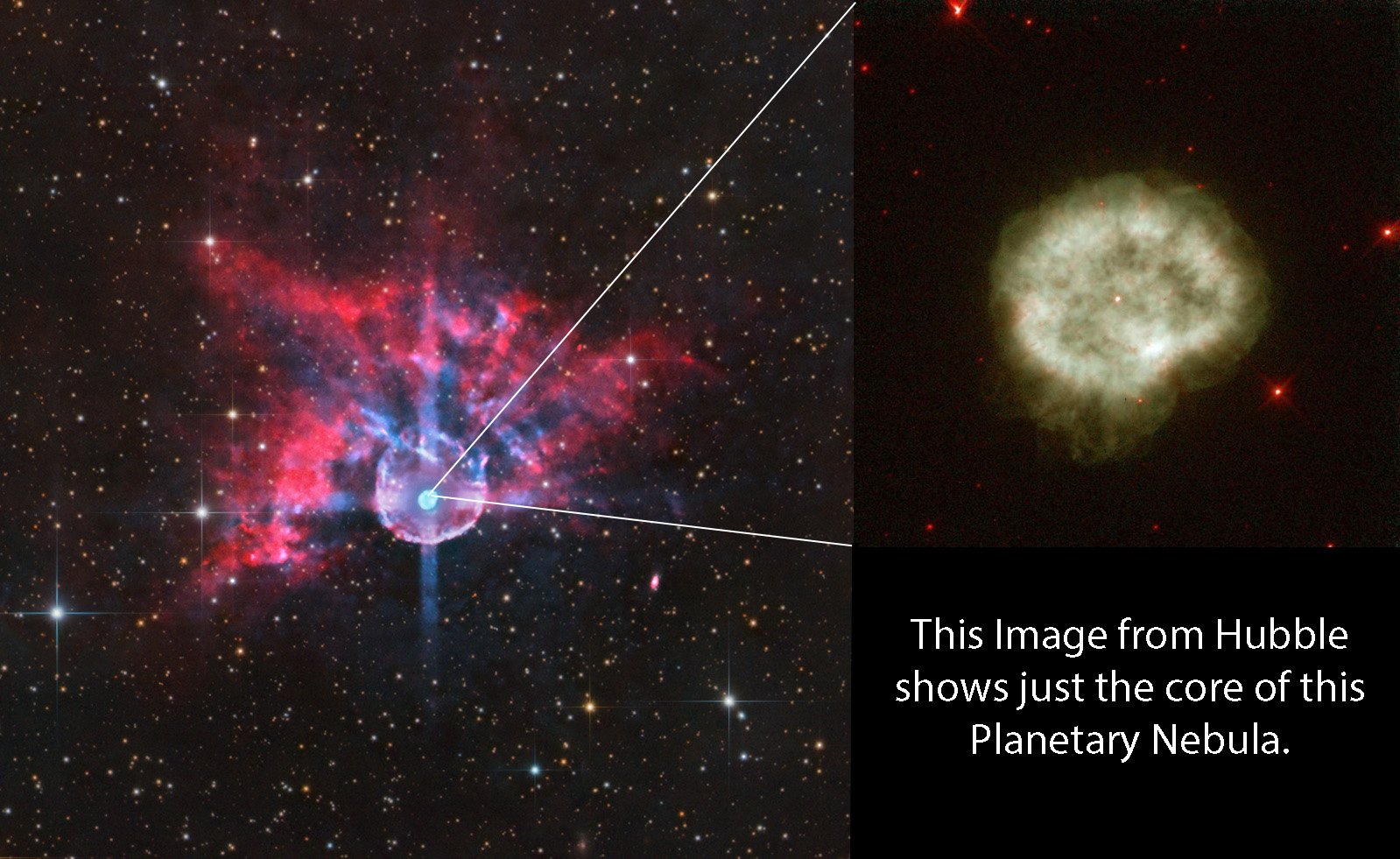NGC 2867- “A Rare Look”
A rare view of this Planetary nebula shows the eerie shroud of HA and O3 surrounding the core of this PN.
NGC 2867 (also known as Caldwell 90) is an elliptical Type II planetary nebula in the southern constellation of Carina, just over a degree to the NNW of the star Iota Carinae. John Herschel discovered the discovery on April 1, 1834.
Herschel initially thought he might have found a new planet, but on the following night he checked again and discovered it had not moved. The nebula is located 7,270 light-years from the Sun.
Caldwell 90 was formed in the late stages of the development of a Sun-like star. Following the nuclear fusion of hydrogen into helium in its core, the star underwent a series of energy crises when its supply of hydrogen began to decline. Without the outward force previously created by the energy production, gravity shifted and caused the star's core to contract.
The extra pressure allowed the star to produce a heavier substance in its core. The synthesis of carbon produced a lot more energy than the fusion of hydrogen into helium, which enabled the star to not only overcome gravity to expand once more but led the star to become a red giant.
Eventually the red giant’s outer layers of gas were ejected. Meanwhile, the star transformed from a cool giant into a hot, dense star that radiates ultraviolet light and a fast wind of particles that move outward at around 6 million miles per hour. The stellar wind and ultraviolet light interact with the layers of gas that the red giant ejected to create the glowing, spherical shell we see today.
Image Processing: Mark Hanson
Data: Martin Pugh
Enjoy, Mark

